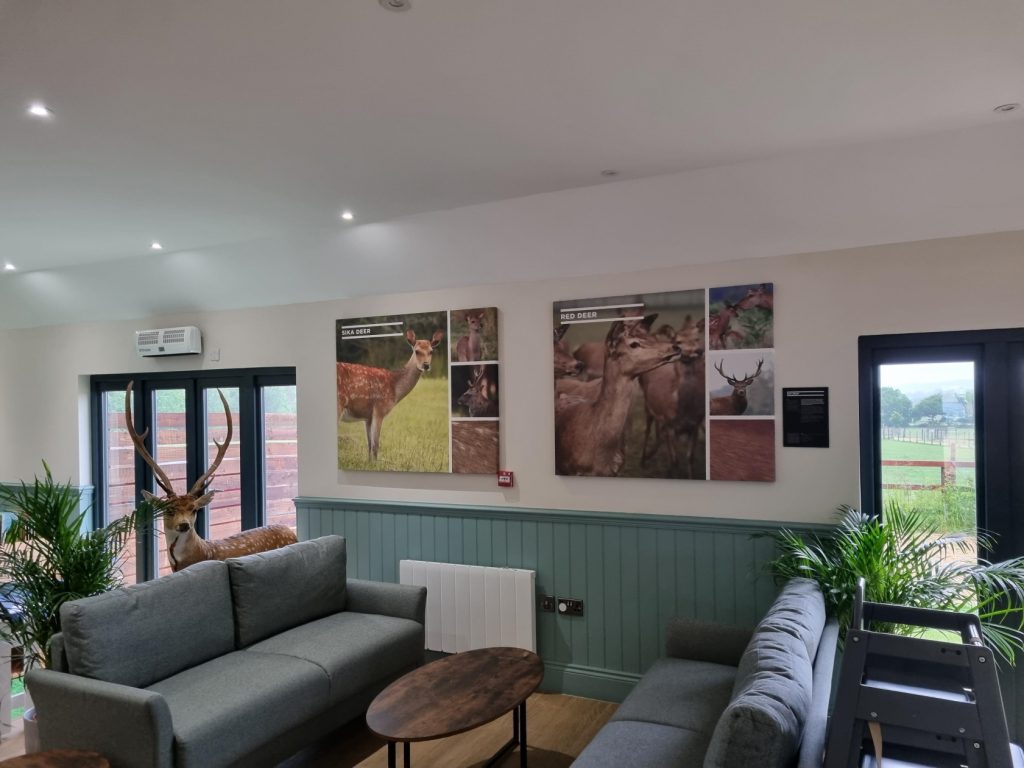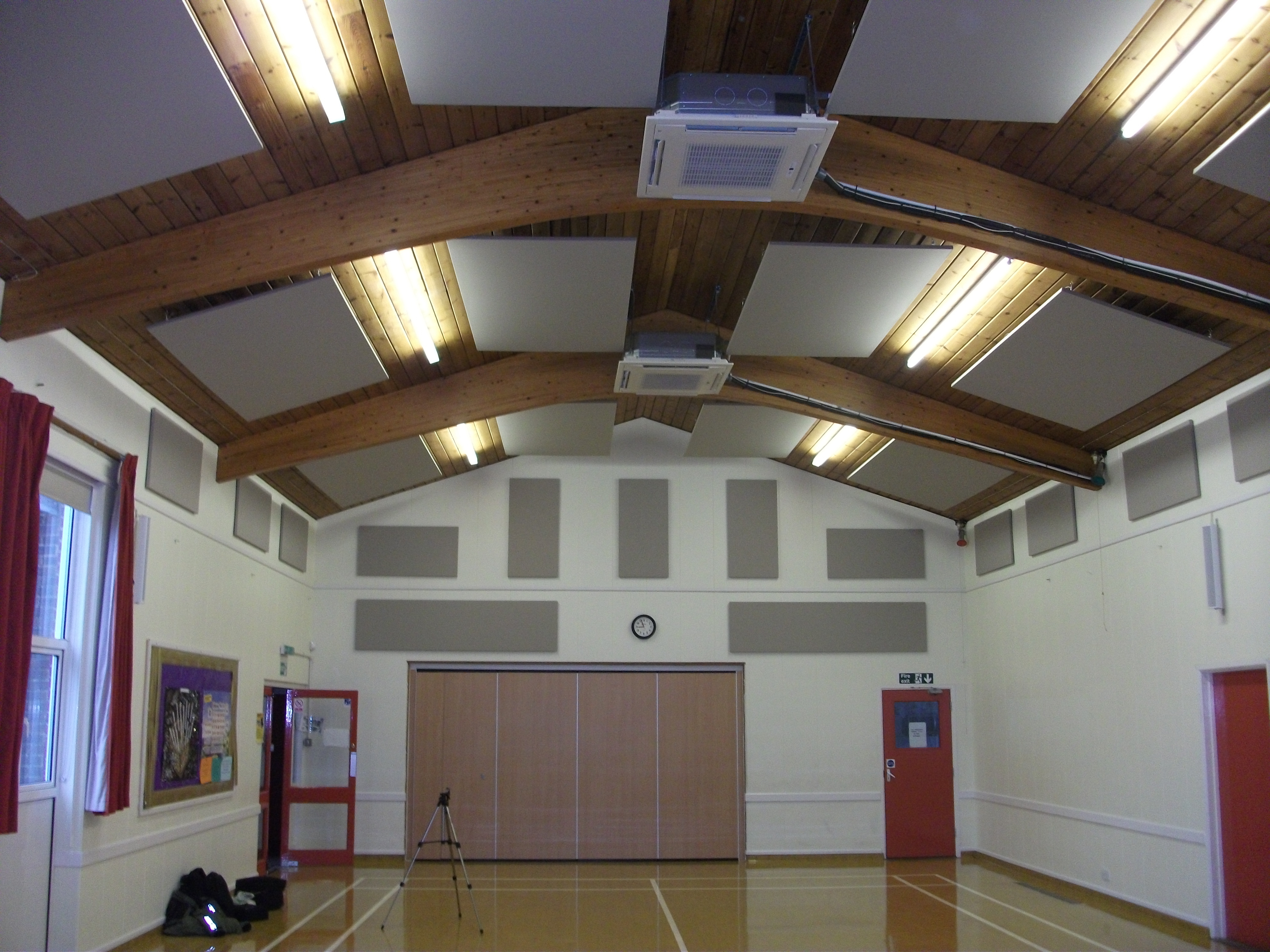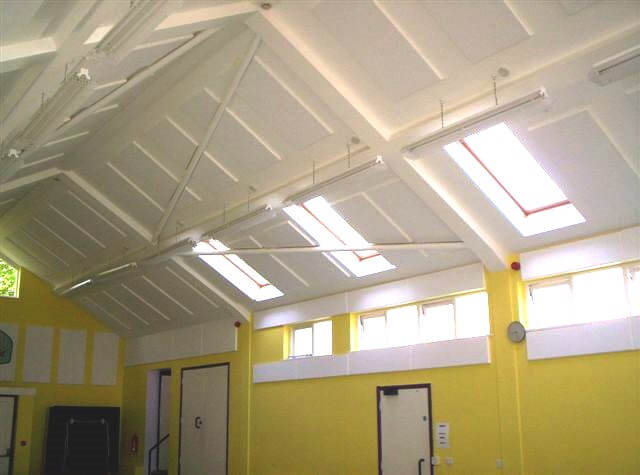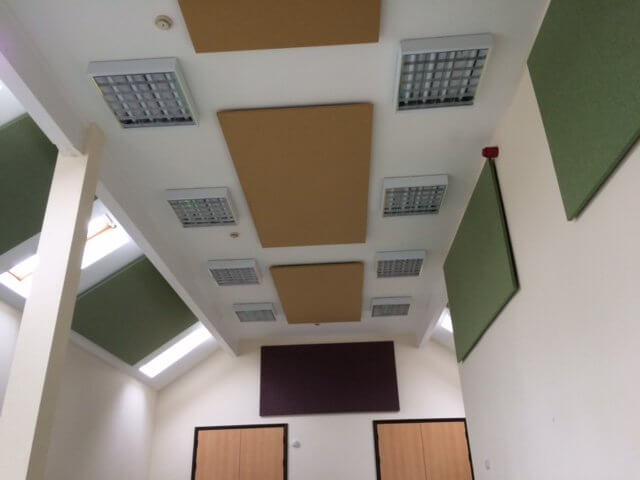Village hall too noisy?
Village Hall Acoustics & Noise Control
Community Village Halls are usually used as multi-purpose spaces. Most are built with no consideration for the internal acoustics. Consequently there can often be issues when the space is commissioned.
We have tested some village halls where their use for children’s clubs was untenable because of the excessive noise build-up within the hall.
This type of village hall may be used for sports activities, clubs, film shows, dances, discos, concerts and presentations, etc.
Each of these activities ideally requires a degree of acoustic comfort.
It would therefore be wise to design these halls for speech requirements because these are slightly more critical.
Surprisingly the reverberation time in village halls can be higher than 4.0 seconds at 1kHz when it should instead be in the region of around 1.0 second for speech and around 1.5 seconds for music.
With a 4-second reverberation time speech intelligibility will be almost non-existent and the reverberant sound pressure levels within a space full of children would be almost unbearable.
It would certainly be higher than the Noise at Work regulations would allow, without hearing protection, for a prolonged period of time.
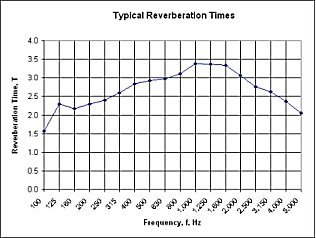
The graph above shows measured one-third-octave band reverberation times for a village hall that had a volume of only 400m³.
As can be seen, the average mid-frequency, Tmf, decay time is around 3 seconds whilst the peak at 1kHz is 3.5 seconds.
This is rather excessive and will lead to a build up of noise energy within the space.
Consequently this will make speech intelligibility extremely poor. Furthermore it will cause the people using the space to raise their voices louder and louder to try and be heard.

The second graph shows our predicted reverberation time after acoustic treatment against actual measurements after installation.
We actually compared several different reverberation time formulas and, as is shown, the calculations we made were extremely accurate down to about 500Hz.
The panels chosen were sympathetic to the budget as well as the aesthetics.
In this particular application, with careful panel placement and design, we managed to use only 50m² which, considering the volume and total surface area of the space, is impressive.
Other Design Points to Consider
Community village halls usually have a level floor. This means that direct sound from a stage will tend to get attenuated as it passes over a seated audience.
The deeper the rows the more the attenuation. Stage end reflections will help to reinforce the sound. Acoustic panels will prevent excessive wall and ceiling reflections.
It therefore follows that a wide stage within a wide hall with a shallow seating depth is better than a long thin hall with deep seating. Raked or tiered seating is preferable.
Larger halls may require stage speakers. In the event of amplified music the building envelope should be designed to provide adequate sound insulation. This will reduce noise complaints from local residents.
